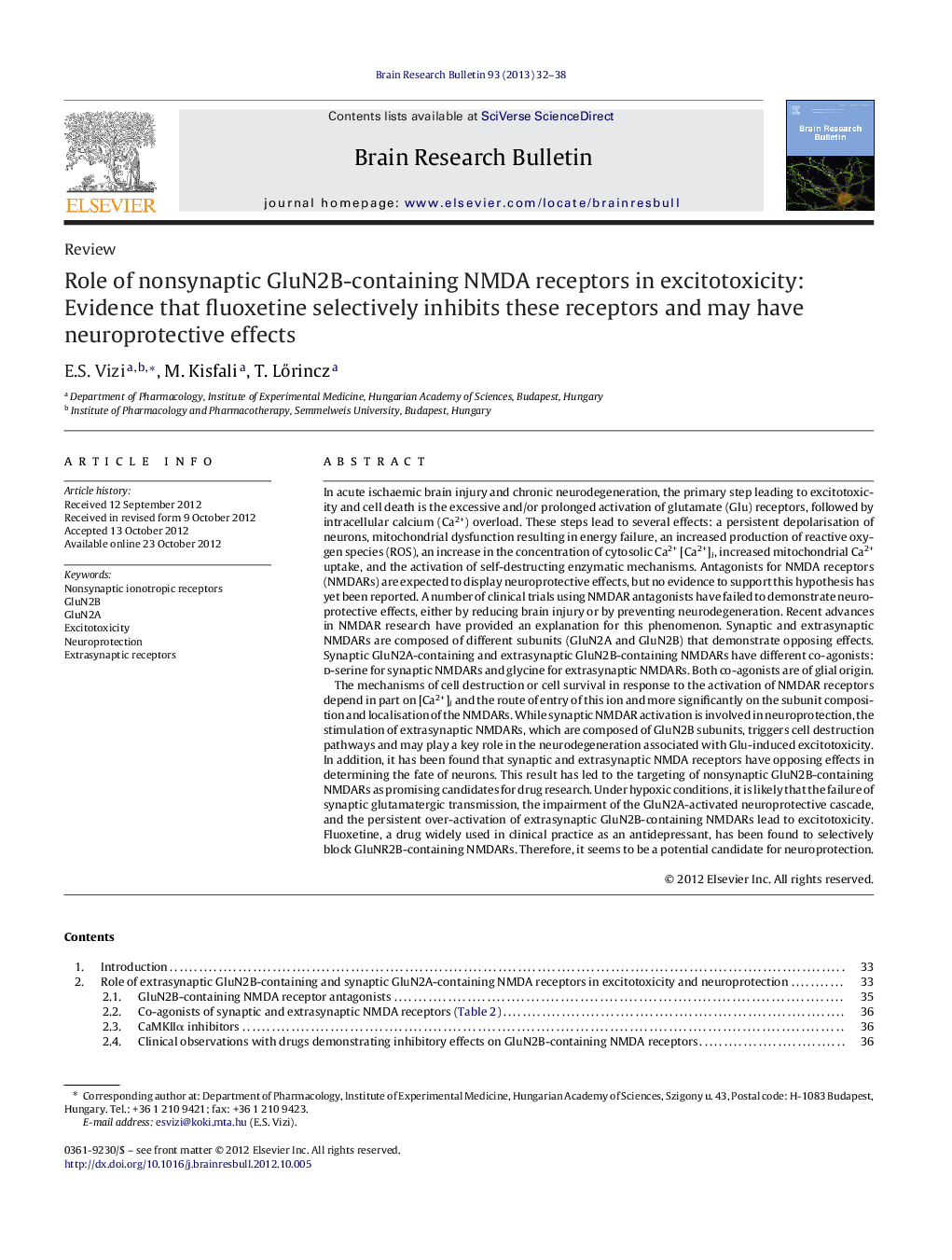| کد مقاله | کد نشریه | سال انتشار | مقاله انگلیسی | نسخه تمام متن |
|---|---|---|---|---|
| 4318866 | 1613262 | 2013 | 7 صفحه PDF | دانلود رایگان |

In acute ischaemic brain injury and chronic neurodegeneration, the primary step leading to excitotoxicity and cell death is the excessive and/or prolonged activation of glutamate (Glu) receptors, followed by intracellular calcium (Ca2+) overload. These steps lead to several effects: a persistent depolarisation of neurons, mitochondrial dysfunction resulting in energy failure, an increased production of reactive oxygen species (ROS), an increase in the concentration of cytosolic Ca2+ [Ca2+]i, increased mitochondrial Ca2+ uptake, and the activation of self-destructing enzymatic mechanisms. Antagonists for NMDA receptors (NMDARs) are expected to display neuroprotective effects, but no evidence to support this hypothesis has yet been reported. A number of clinical trials using NMDAR antagonists have failed to demonstrate neuroprotective effects, either by reducing brain injury or by preventing neurodegeneration. Recent advances in NMDAR research have provided an explanation for this phenomenon. Synaptic and extrasynaptic NMDARs are composed of different subunits (GluN2A and GluN2B) that demonstrate opposing effects. Synaptic GluN2A-containing and extrasynaptic GluN2B-containing NMDARs have different co-agonists: d-serine for synaptic NMDARs and glycine for extrasynaptic NMDARs. Both co-agonists are of glial origin.The mechanisms of cell destruction or cell survival in response to the activation of NMDAR receptors depend in part on [Ca2+]i and the route of entry of this ion and more significantly on the subunit composition and localisation of the NMDARs. While synaptic NMDAR activation is involved in neuroprotection, the stimulation of extrasynaptic NMDARs, which are composed of GluN2B subunits, triggers cell destruction pathways and may play a key role in the neurodegeneration associated with Glu-induced excitotoxicity. In addition, it has been found that synaptic and extrasynaptic NMDA receptors have opposing effects in determining the fate of neurons. This result has led to the targeting of nonsynaptic GluN2B-containing NMDARs as promising candidates for drug research. Under hypoxic conditions, it is likely that the failure of synaptic glutamatergic transmission, the impairment of the GluN2A-activated neuroprotective cascade, and the persistent over-activation of extrasynaptic GluN2B-containing NMDARs lead to excitotoxicity. Fluoxetine, a drug widely used in clinical practice as an antidepressant, has been found to selectively block GluNR2B-containing NMDARs. Therefore, it seems to be a potential candidate for neuroprotection.
► Role of extrasynaptic GluN2B subunit-containing NMDA receptors in excitotoxicity.
► Role of synaptic GluN2A subunit-containing NMDA receptors in neuroprotection.
► Effect of fluoxetine.
► Clinical studies with different glutamate receptor antagonists.
► Selective GluN2B subunit-containing NMDA receptor antagonists.
Journal: Brain Research Bulletin - Volume 93, April 2013, Pages 32–38